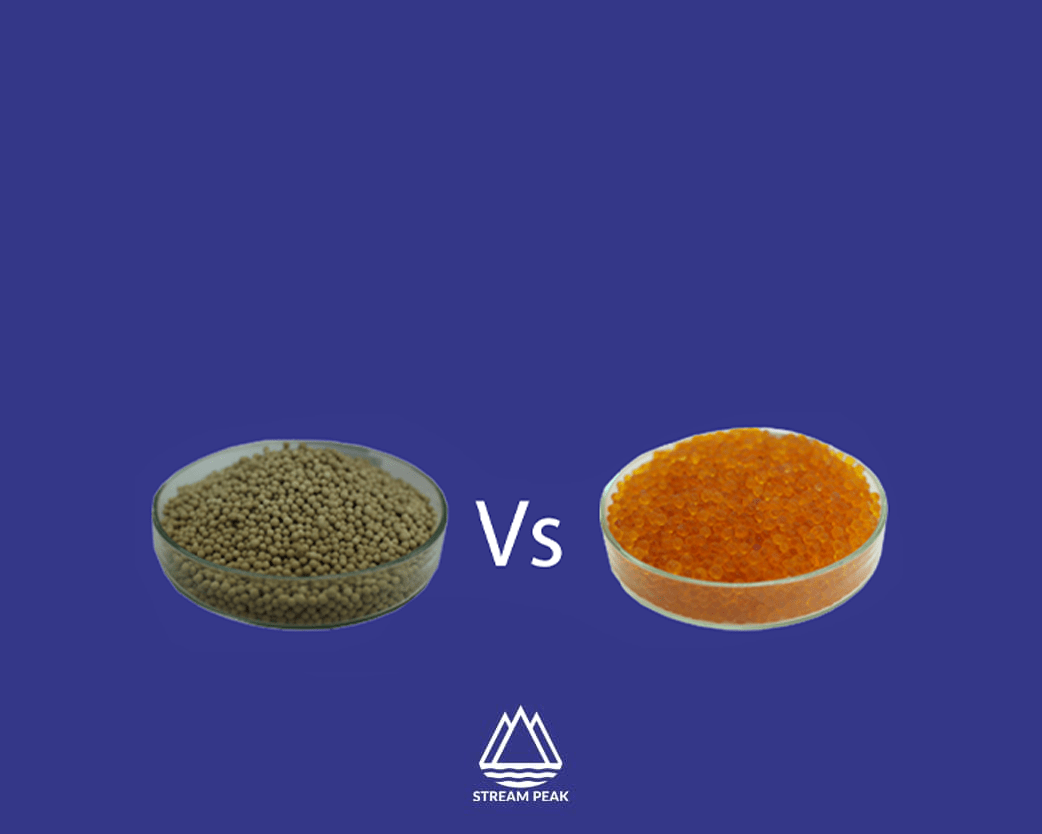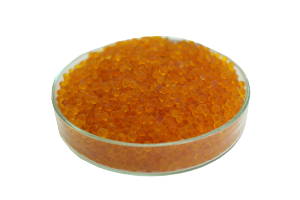Molecular Sieve vs Silica gel

Molecular sieves and silica gel are materials commonly used as desiccants or drying agents in various industries. Each desiccant has unique properties and applications. This article explores the differences between molecular sieves and silica gel and examines their respective advantages and disadvantages.
Silica Gel
Silica gel is composed of amorphous silicon dioxide  and is widely used as a desiccant. The desiccant is available in various forms, such as beads, pellets, and granules. It is often found in small packets placed in product packagings, such as electronics, leather goods, drying flowers, and pharmaceuticals, to prevent moisture damage.
and is widely used as a desiccant. The desiccant is available in various forms, such as beads, pellets, and granules. It is often found in small packets placed in product packagings, such as electronics, leather goods, drying flowers, and pharmaceuticals, to prevent moisture damage.
One of the main advantages of using silica gel desiccants is its low cost. This makes it an ideal choice for many applications, particularly in consumer products. Silica gel is also non-toxic, non-flammable, and chemically stable, making it safe for use in food and pharmaceuticals.
Silica gel’s tiny pores efficiently adsorb water down to 20% relative humidity at 25°C while not absorbing hydrocarbons, thus making it an ideal rust preventative and a moisture absorber.
While it absorbs moisture, its adsorption rate is less than a molecular sieve. It is also less effective at lower RH values. Its ability to operate normally in high temperatures declines and should be used with milder temperatures.
Key Features
- Moisture Control: Silica gel is renowned for its ability to adsorb and hold moisture. It is frequently used as a desiccant in various industries, including electronics, pharmaceuticals, food storage, and leather goods. Silica gel packets are commonly found in product packaging to prevent moisture-related deterioration, such as mould growth or corrosion.
- Humidity Regulation: Silica gel is also employed in humidity control. It can absorb or release moisture depending on the surrounding conditions, helping to maintain a specific humidity level. This property makes it suitable for museum storage, where maintaining a stable humidity environment is crucial for preserving valuable artefacts.
- Chromatography: Silica gel’s porous structure makes it an excellent material for chromatographic separations. It is used as a stationary phase in various forms of chromatography, including column chromatography and thin-layer chromatography. The desiccant’s ability to selectively adsorb and separate different compounds is instrumental in analysing complex mixtures and purifying substances.
Molecular Sieves
Molecular sieve desiccants are synthetic zeolites with a crystalline structure and uniform pores. The pores allow the sieves to adsorb molecules based on size and shape selectively. The desiccant is widely used in industrial applications, such as gas separation, petroleum refining, and the production of plastics and chemicals.
The desiccants are available in different pore sizes to accommodate different moisture levels, ranging from 0.5 to 50 nanometers, allowing them to trap molecules and absorb the desired substances while excluding other materials. In addition, the desiccant is non-corrosive and has good chemical stability, making them suitable for many applications.
One of the main advantages of the desiccant is its high selectivity. This makes them ideal for applications where specific molecules must be removed or separated. For example, the desiccant can remove water from solvents or separate different gases from a mixture.
Molecular sieve desiccants are more expensive than silica gel. This can make them less cost-effective for certain applications, particularly in consumer products. Molecular sieves are also more sensitive to certain molecules, such as water. This can cause them to degrade over time, reducing their effectiveness.
Key Features
- Moisture Control: The desiccants have a strong affinity for water molecules, allowing them to effectively remove moisture from liquids and gases. This makes them valuable in applications such as drying solvents, purifying natural gas, and preventing moisture-related degradation in pharmaceuticals.
- Gas Separation: Molecular sieves can be tailored to adsorb specific gases from gas mixtures selectively. This capability finds applications in gas separation processes, such as air purification and removing impurities from industrial gases. By exploiting the different sizes and shapes of gas molecules, molecular sieves can efficiently separate gases based on their molecular properties.
- Dehydration of Petrochemicals: In the petrochemical industry, molecular sieves dehydrate hydrocarbons. They help remove water from the feedstock or final products, prevent corrosion, and improve petrochemicals’ quality.
Difference between molecular sieves and silica gel
The primary difference between molecular sieves and silica gel is their moisture adsorption properties. Molecular sieve desiccants have a higher adsorption capacity for water vapour than silica gel. This means they can remain effective for longer periods, reducing the need for replacement. Molecular sieves are also highly stable and can withstand exposure to harsh chemicals and high temperatures.
Both types of desiccants possess equivalent moisture retention capacities at room temperature (25°C) and 40% relative humidity. Regarding absorption speed, molecular sieve desiccant has a faster moisture removal rate.
Temperature can also affect the effectiveness of both desiccants differently. As the temperature increases, the capacity of molecular sieves to absorb water vapour also increases, whereas silica gel has a weaker absorption rate with higher temperature levels.
How to choose between molecular sieves and silica gel?
When choosing between a molecular sieve and silica gel, it is essential to consider different conditions. The environment’s relative humidity and temperature ranges should be considered, as they will affect the effectiveness of both desiccants. Consider if any changes in moisture content or pressure levels may occur during storage. It is also essential to evaluate whether the product needs fast adsorption or is better off with slower but higher-capacity absorption.
Molecular sieves can quickly absorb water vapour and are generally used for applications where quick absorbance or moisture removal is desired. They do well at low relative humidity and temperatures but suffer when subjected to high humidity. Silica gel works well over a wide range of temperatures from -12°C to 85°C. They are competent when subjected to contaminants like hydrocarbons due to their higher capacity properties, making them suitable for more demanding applications.
Things to note when using desiccants
Desiccants are substances used to maintain optimal environmental conditions in the packaging. The moisture absorbers prevent the degradation of active ingredient potency, shelf-life and product quality over time.
When less-than-optimal quantities of desiccant are used, there is insufficient removal of excess humidity from the packaging headspace. This may result in instability of the physical and chemical properties of the active ingredient and excipients in the product. As these changes can negatively affect products’ safety, quality and shelf life, achieving an accurate optimisation of desiccants for optimal benefit is essential. Find out more about how much desiccants to use.
Other types of desiccants available
Many other types of desiccants are available, such as activated charcoal, calcium oxide, calcium sulfate, activated alumina and montmorillonite clay. All have advantages and disadvantages depending on the material being stored or transported.
Activated charcoal is usually made from wood or bone char and is widely used due to its large surface area and relatively low price. It has a high absorptive capacity and can adsorb many substances, including acids, soaps and ammonia gas. Calcium oxide is a fast-acting desiccant but also poses certain risks by generating heat when it comes into contact with water vapour or moisture. Calcium sulfate works very well in low-humidity environments since it does not release any corrosive gases or generate any heat when absorbing moisture.
Conclusion
Both silica gel and molecular sieves are effective desiccants with unique properties and applications. Silica gel is widely used due to its low cost, availability, and non-toxic nature. However, molecular sieves offer high selectivity and adsorption capacity, making them ideal for specific applications where purity is critical.
When considering which adsorbent to use, it is essential to evaluate the application’s specific requirements. Factors such as the targeted molecules, desired selectivity, and moisture control needs should be considered. Consulting with experts in the field or conducting tests can help determine the most appropriate adsorb.

